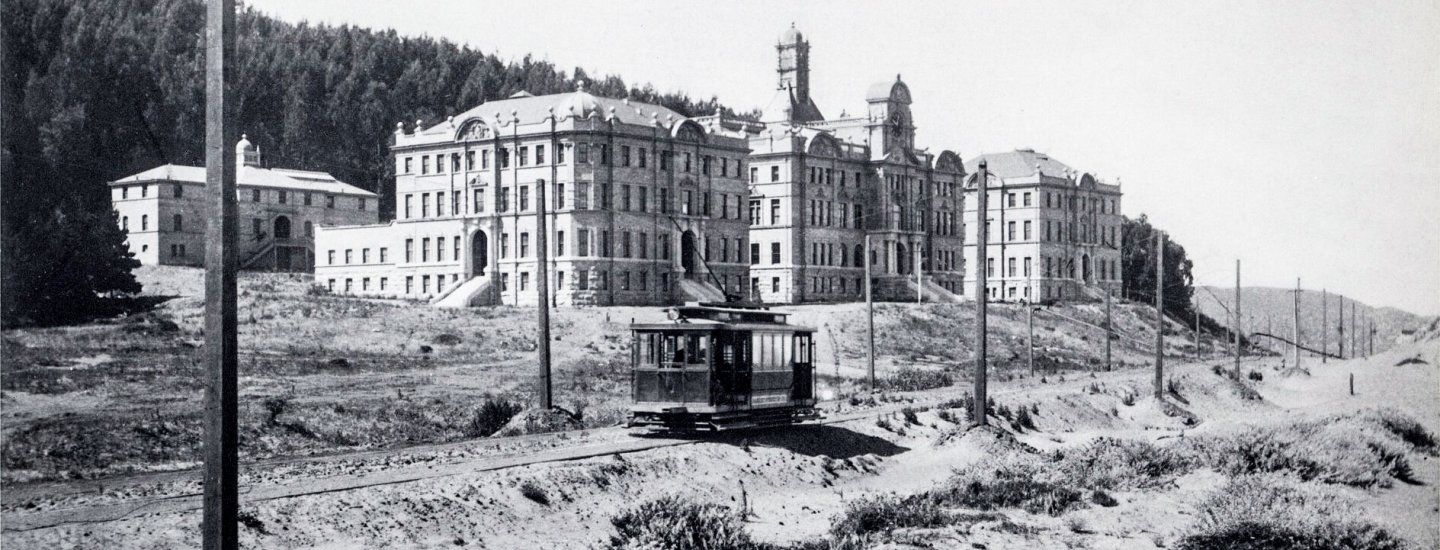History of UCSF
One of the world’s leading health sciences universities, the University of California, San Francisco (UCSF), dates its founding to 1864, when South Carolina surgeon Hugh Toland founded a private medical school in San Francisco.
Toland had come west in 1849 to seek his fortune in the California Gold Rush, but after a few discouraging months as a miner, he set up a surgical practice in booming San Francisco. As his wealth and influence grew, he purchased land in North Beach and opened Toland Medical College.
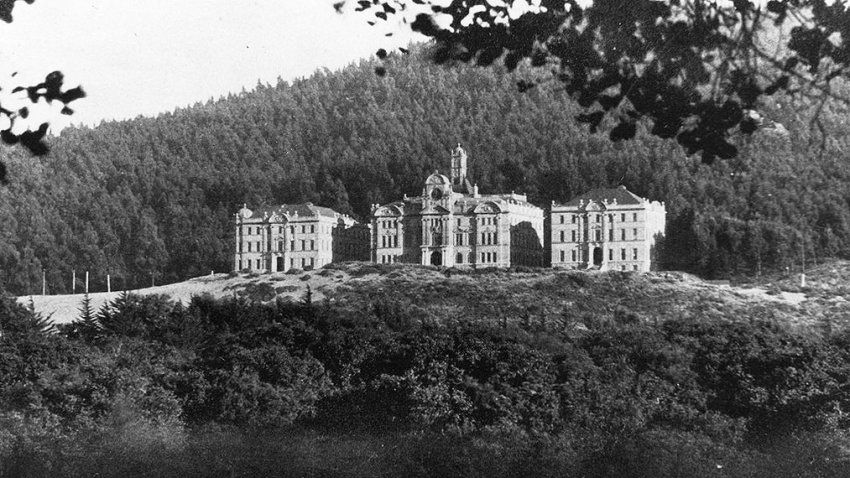
The Affiliated Colleges, initially located at various sites in San Francisco, were united on a site overlooking Golden Gate Park — known today as Parnassus Heights.
The college prospered, and Toland sought to affiliate with the University of California, which had opened its campus in Berkeley in 1868. UC President Daniel Coit Gilman, who strongly supported science education, set a precedent for the young university by affiliating in 1873 with both Toland Medical College and the California College of Pharmacy. Eight years later, the UC Regents added a dental college.
The three Affiliated Colleges — also called UC departments — were located at various sites in San Francisco, and after several years there was strong interest in bringing them together. San Francisco Mayor Adolph Sutro donated 13 acres on a site overlooking Golden Gate Park — known today as Parnassus Heights — and the new Affiliated Colleges buildings opened in fall 1898.
Establishing an Academic Medical Center
When the great San Francisco earthquake destroyed much of San Francisco and the city’s medical facilities in April 1906, more than 40,000 people took shelter and sought treatment in a tent city in Golden Gate Park, where makeshift outdoor hospitals were set up. The Affiliated Colleges, located on the hill above the encampment in what was then the far western section of the city, suddenly were situated close to a significant population. Faculty sprung into action treating those injured from the earthquake and subsequent fire.
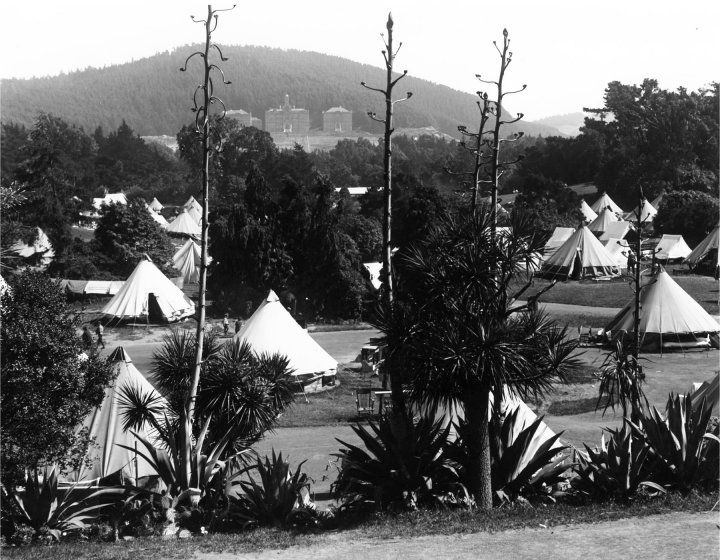
More than 40,000 people took shelter and sought treatment in a tent city in Golden Gate Park after the great 1906 earthquake in San Francisco.
Previous interest in establishing a UC teaching hospital on the Parnassus site took on momentum as a civic responsibility to provide care in an area where it was needed. This type of commitment to community service had been put in motion through an 1873 agreement struck by leaders of the Affiliated Colleges with the city to provide patient care at its public health hospital (later named San Francisco General Hospital).
One of the Affiliated Colleges buildings at Parnassus Heights was renovated as a facility for inpatients, outpatients and dental services, and opened in April 1907 with 75 beds.
With this new facility came the need to recruit nurses and the opportunity to train nursing students. In 1907, the UC Training School for Nurses was established, adding a fourth professional school to the Affiliated Colleges. To make room for expanded clinical services and instruction on Parnassus, the medical college basic science departments — pathology, anatomy and physiology — moved to the Berkeley campus.
In 1911, the last member of the American Indian Yahi tribe began living on the Parnassus campus. He was starving when he walked out of the wilderness in Oroville, Calif., capturing the attention of UC anthropologists who brought him to San Francisco. They named him Ishi, for “man” in the Yahi language. Over the next few years, UC physicians and anthropologists learned about Yahi culture from Ishi, and on weekends, hundreds flocked to the anthropology museum to watch him demonstrate arrow-making and other life skills. He continued to live on Parnassus until 1916, when he died of tuberculosis.
Establishing a National Reputation
Over the next 50 years, leaders of the Affiliated Colleges and UC moved forward with an eye to establishing an institution with a national reputation. They improved the curriculum, upgraded admission requirements, expanded research and clinical programs, and built new facilities.
One key achievement came in 1914, when the Hooper Foundation for Medical Research selected Parnassus as the site for its work. Second in size only to New York’s Rockefeller Institute, Hooper was the first medical research foundation in the United States to be incorporated into a university.
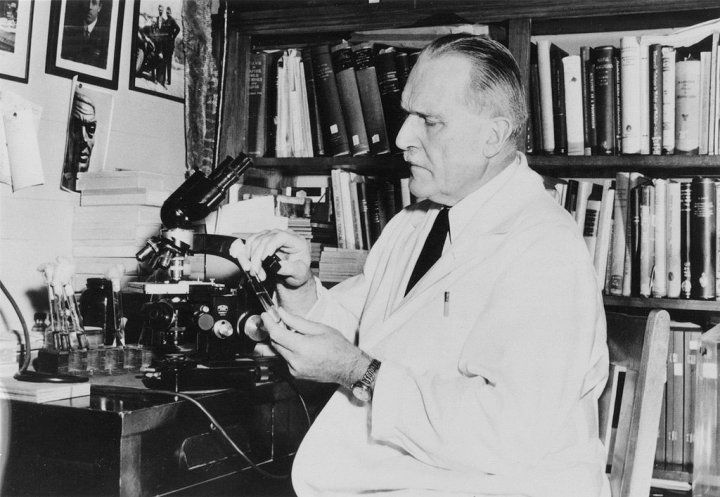
Karl F. Meyer, PhD, pictured here in the 1920s, led the Hooper Foundation for more than three decades. Under his guidance the foundation became recognized throughout the world as a pioneer center for research on diseases of animals transmissible to man.
The George Williams Hooper Foundation added prestige to the Parnassus site amidst ongoing debate by UC leaders and faculty about the best location for the medical college: San Francisco or Berkeley. Fueling the discussion was a rumor that a major Rockefeller endowment would support a school of public hygiene on the Berkeley campus, but only if the medical college was located there. In a series of votes over the next three decades, the UC Regents supported consolidation of all clinical instruction and basic science departments in San Francisco, but the debate continued.
In 1949, the Regents designated the Parnassus campus as UC Medical Center in San Francisco. It still took several years for all the basic science departments to move back from the East Bay, due in part to the need to secure construction funds for new facilities to house them. When the Medical Sciences Building was completed in 1958, the basic science departments had a new home on the same campus as the clinical departments, uniting the medical college for the first time in 50 years.
Meanwhile, several new research institutes had been established and clinical services expanded.
New clinical facilities had opened about every 10 years, lining and defining Parnassus Avenue: the 225-bed UC Hospital (1917), Clinics Building (1934), Langley Porter Clinic (1942) and Herbert C. Moffitt Hospital (1955).
A highlight of the growth was an art project funded by the Works Progress Administration, setting the stage for a tradition of public art that has continued at UCSF. Artist Bernard Zakheim, a student of Diego Rivera, was commissioned in 1938 to paint a series of murals depicting the history of medicine in the lecture auditorium of UC Hospital, now UC Hall.
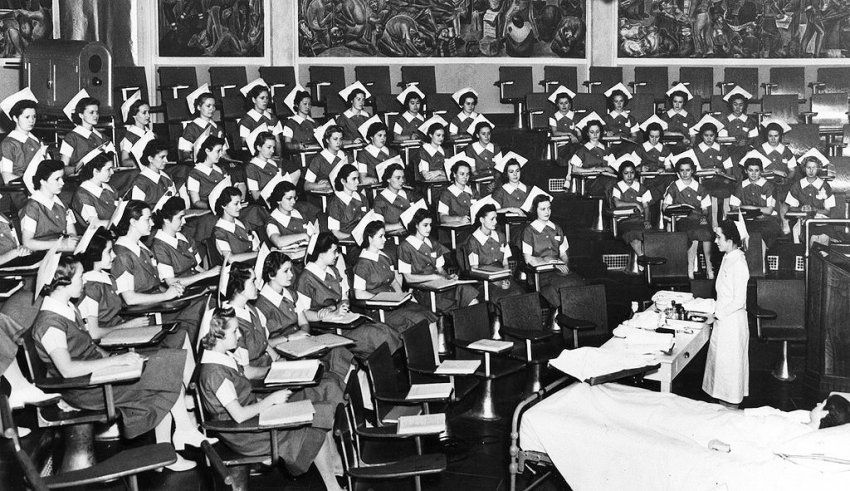
A 1941 nursing class in Toland Hall, with the murals of Bernard Zakheim, student of famed artist Diego Rivera, adorning the walls in the background.
By 1958, Parnassus was home to the Biomechanics Laboratory, Cancer Research Institute, Proctor Foundation for Research in Ophthalmology, Metabolic Research Unit and Cardiovascular Research Institute. The addition of Guy S. Millberry Union, also in 1958, provided dorms and support services for students.
